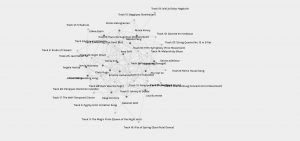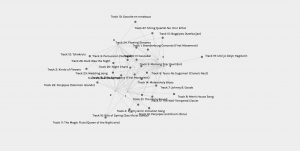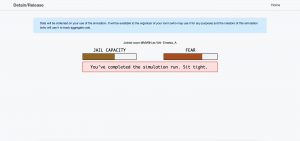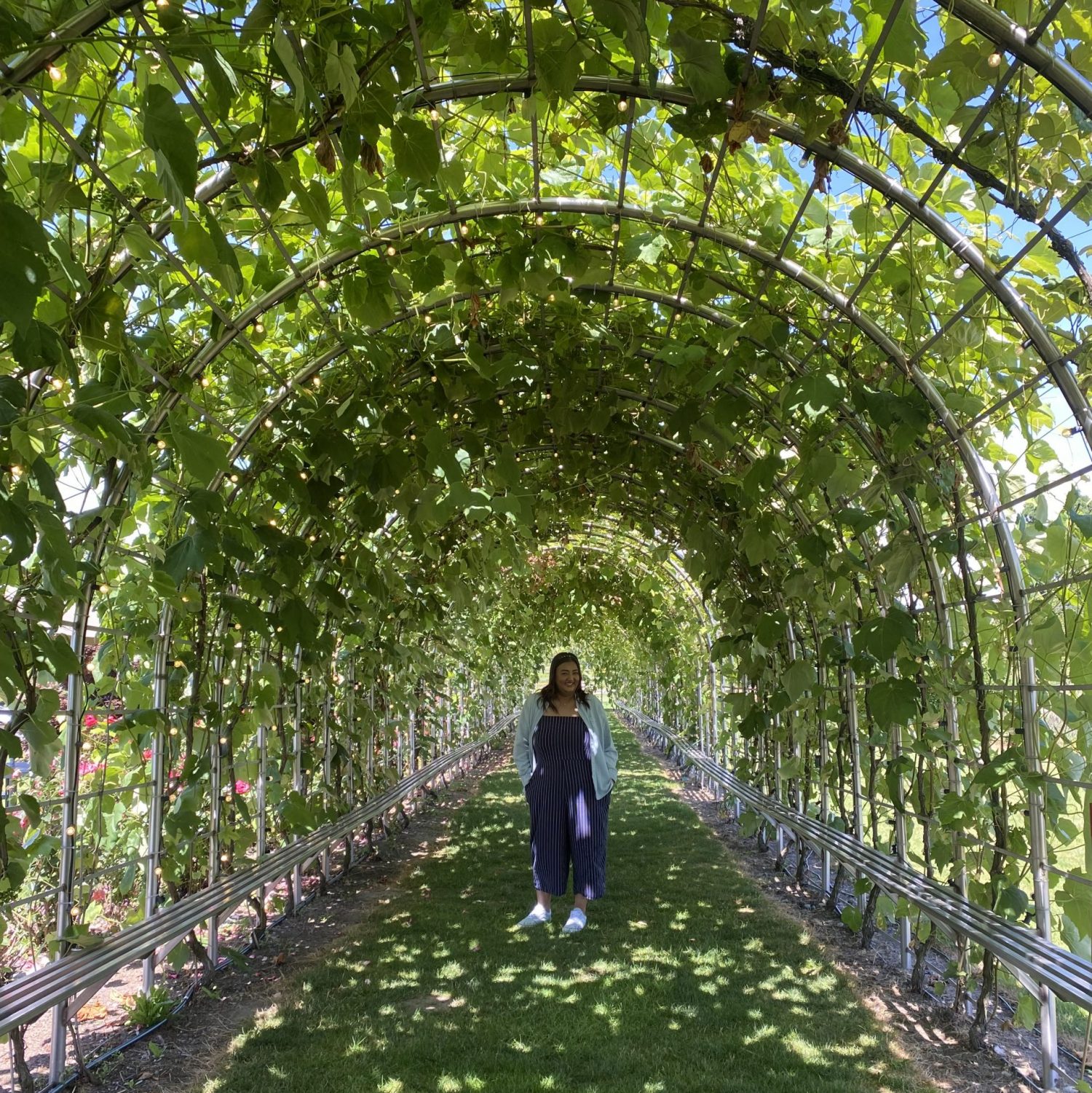Please view my Sway above, if you are having trouble viewing, you can also click on the following link: Book Creator Sway
ETEC 540
All work and blog posts completed during my time in ETEC 540
Task 12: Speculative Futures
StandardPrompt:
Describe or narrate a scenario about a news headline found a few years into a future in which society as we know it has come apart. Your description should address issues related to artificial intelligence and elicit feelings of cheer.
Scenario:
The year is 2040 and the health industry as we know it has changed for the better. With the creation of the new website and app called HealthLink Canadian residents can now have unlimited access to their health information at their fingertips.
The application allows for patients to:
- Book an appointment with an available doctor
- Have access to their own medical information at their fingertips
- Get within the hour access to most blood tests and lab results
- Be provided with customized nutritional information based on their individual health concerns
- Have a comprehensive understanding of their vitamin levels
The HealthLink app was created to fill a void in the healthcare industry. Just a few years ago, access to doctors was extremely limited. Many Canadians had a hard time finding a family doctor to see or even a clinic to go to with reasonable wait times. The HealthLink app allows Canadians to take control and access of their own health. The artificial intelligence in the HealthLink app allows the algorithm to locate available medical professionals as well as store and house safely patient medical information so patients always have access to their own important data regardless of which medical professional they see.
HealthLink has revolutionized the patient experience in Canada and has now received global recognition. The European Union and Great Britain are looking to implement the HealthLink app in their own countries and are looking to Canadian professionals for support in doing so.
HealthLink is currently looking to expand its market to provide patient access to other areas of health, including mental health, dental, and physiotherapy.
Reflection:
“Speculative design asks questions about the future and offers some alternatives for the world of today, but more importantly, the world of tomorrow. It is a discursive activity founded in critical thinking and dialogue reflecting design practice” (Mitrović, Auger, Hanna, and Helgason p. 69).
When thinking about this writing prompt and how AI can be used to elicit feelings of cheer, I immediately thought about the healthcare industry and how AI could be used to make healthcare easier for many, “Computer scientists are developing artificial intelligence (AI) algorithms that can learn, analyse massive amounts of data and recognize patters with superhuman efficiency” (Harari, 2017, p. 324). I think when using AI, simplifying everyday experiences, especially ones as sensitive and important as healthcare is, is really important and can make a difference for many people.
AI and computer algorithms, often times, have the power to do much more that what is in the realm of capability for many individuals, therefore, taking advantage of these programs and intelligences to better the health of many can be crucial.
References
Harari, Y. N. (2017). Reboot for the AI revolution. Nature International Weekly Journal of Science, 550(7676), 324-327.
Linking Assignment #6: Amy Stiff: Attention Economy
StandardMy previous linking assignment, I chose to focus on a colleagues blog that had a completely different perspective and way of interpreting data than myself. For this link, I chose to focus on Amy Stiff’s Attention Economy Post because her perspective and interpretation of the website was similar to mine. We both seem to have experienced similar difficulties and annoyances when navigating the website and had similar reflections. Amy was able to navigate the website much faster than I was able to so I was curious about how she was able to figure it out more seamlessly.
I found it very intriguing that both Amy and I noted in our reflections regarding the ease in which scammers can take advantage of website user’s vulnerability as user’s expect a certain type of interface and can easily get confused when the algorithm is switched on them.
I like that Amy noted Brignull (2011) and how susceptible us adults are when it comes to the internet and to also think about student vulnerability. This was not something that I thought about in that way so I like that Amy pointed it out. Especially, when I think about the fact that I am a millennial and have grown up with the internet and these tools and resources and still find some features frustrating which means that students who are still learning these tools can also be challenged as well.
Amy also mentioned that teachers can use these types of interfaces to direct student attention which I thought about as well and I do wonder if students could complete the game Use Inyerface and this is something I am thinking about possibly trying with my grade 6/7 students.
References
Brignull, H. (2011). Dark patterns: Deception vs. honesty in UI design. A List Apart, 338.
Linking Assignment #5: Seime Adhémar: Mode Bending
StandardI chose to reflect on Seime Adhémar’s Mode Bending Assignment mainly because Seime used a tool called Voyant Tools which I had never heard of before. The tool and the graph’s that were created were fascinating to me but also at times a bit confusing because this is a whole new world for me.
Seime did not have items similar to me in his bag and that was also intriguing to me because I take a lot of items to and from work but Sieme is focused on carrying his teaching tools.
As an English major and History minor, I rarely use graph’s to interpret or understand data. I am used to reading and absorbing information by taking notes. I will say that when I was looking at Seime’s mode bending task, I had to go to the original “What’s in My Bag” post in order to interpret what was being shown to me with the data. Seime teaches French so there were a lot of French related teaching tools in the bag.
In my mode bending post, I reflected on how The New London Group (1996) has emphasized that learning has become multi-modal and that “the process of shaping emergent meaning involves representation and recontextualization”(p. 75). With Seime’s interpretation of the mode bending assignment, I see how others and their ways of interpreting and looking at data can be very different from mine. I also have reflected on how I, as an educator, can try to create learning opportunities for my students that would allow them to showcase their interests even if it way be a realm that I am unfamiliar with.
References
The New London Group. (1996). A pedagogy of Multiliteracies: Designing Social Futures. Harvard Educational Review 66 (1), 60-92.
Linking Assignment #4: Kristine Lachance: An Emoji Story
Standard
Kristine’s emoji story featured a show that I watch weekly as a distraction and a guilty pleasure so I immediately knew what she was talking about when I saw her emoji title. Kristine chose an episode of the popular HGTV show, House Hunters International. The family in the show are tired of the cold winters in Canada and decide to embark on a move to the much warmer climate Mexico has to offer. For myself, I am very familiar with the plot of House Hunters. Families provide the audience with their wants and desires in a home, including budget, they are then shown three different homes and then make a decision that is right for them. The show then comes in a few weeks or months later for a quick update to see how the family has settled in. Due to being familiar with the plot, it was easier for me to understand what was going to happen in the story. Because Kristine used the specific country flag emoji’s I was also able to tell where the couple was from and which country they wanted to move to.
In Kristine’s reflection, she pointed out that there were extra details in the show; the family taking a trip to the zoo and going go carting but she left that out as to not take away from the main plot of the show and confuse her blog visitors. This reminded me of when Kress pointed out that, “in this new semiotic world, it is the readers who fashion their own knowledge, from information supplied by the makers of the site” (2005, p. 10). Those who are consuming the media, in this case, Kristine’s emoji story, are interpreting the story based on the literacies and prior knowledge they have. For myself, a watcher of House Hunters, I may have been able to still follow along if Kristine had chosen to add the trip to the zoo or the go carting pieces but other consumers may have become quite confused.
References
Kress, G. (2005), Gains and losses: New forms of texts, knowledge, and learning. Computers and Composition, 2(1), 5-22.
Linking Assignment 3: Nicole Kenny: Oral Nonsense
StandardI was first intrigued by Nicole’s post for our text-to-speech task because she used the notes app on her phone to dictate her speech and I truthfully was unaware of this capability on my phone. I also found Nicole’s analysis of her phone’s inability to dictate very well gripping and comical.
Nicole remarks that as a perfectionist, she has mastered the use of punctuation and she was shocked to see that her phone’s voice-to-text technology did not pick up on this. As an English major myself, I too feel frustrated when I see lack of punctuation and grammar rules in Nicole’s voice-to-text piece. When reading about the Origins and Forms of Writing by Schmandt-Besserat and Erard, I was shocked to learn that it wasn’t until the late 20th century that there was even an interest in perfecting writing systems and, “this interest led to the publication of encyclopedic works on writing systems. These were novel because they collected language, writing, and cultural experts and combined these with state-of-the-art advances in computer printing that allowed all the characters in numerous writing systems to be printed (2007, p.20).
Today, as scholarly students, and those who work in various areas of the education system, we are so used to seeing heavily edited, curated pieces of literature that sometimes we forget, or may be entirely unaware, that this has not been the case. The origins of communication was simply to do that, communicate. As society evolved and transformed, communication began to have a more complex set of rules and guidelines.
References
Schmandt-Besserat, D., & Erard, M. (2007). Origins and forms of writing. In C. Bazerman (Ed.), Handbook of research on writing: History, society, school, individual, text (pp. 7-26). Routledge.
Linking Assignment 2: Lubna Yasin: Manual Scripts
StandardI was drawn to Lubna’s interpretation of this assignment because she said some things in her post that resonated with how I also interpret writing manually, or by hand. On a side note, I also liked Lubna’s handwriting and find myself drawn to nice handwriting.
Things Lubna said that resonated with me:
- She uses only black ink to write (I do as well)
- She usually does two drafts of her writing (I find I do this as well, due to perfectionist tendencies)
- She finds writing to be a creative process (one of the reasons I resonated to her post is because I liked her printing)
- Digital writing is more convenient for mobility, access, and storage
- Writing with her physical hand helps her to connect to her thoughts better
The last statement that Lubna made resonated with me, the most because I find that writing physically has always worked with my memory better as well and it is something I made a conscious decision about incorporating into my daily life, especially when trying to remember information I need to. In undergrad, I would always opt to write notes by hand, rather than take out my laptop, which I always had in my bag anyways because I knew I would remember key details better if I wrote it out by hand. This act, helped me perform better in any quizzes, tests, and exams I had to take.
Lubna also mentioned that digital writing tools like spell checkers help with academic writing. This is something that I struggle with as an educator and is often why when working on writing pieces, I have my students complete a hand written rough copy before completing a typed digital copy. I find that there is no other way to accurately assess students authentic vocabulary or writing skills.
Linking Assignment 1: Chris Rugo: What’s In My Bag?
StandardFor my first linking assignment, I decided to focus on Chris’s ‘What’s In My Bag’ post. I chose to focus on Chris’s post because he varied from me in a few ways. Firstly, Chris is, male-presenting so I thought it would be intriguing to see if there are any differences between myself (someone who identifies as female) and Chris and what we would carry in our work bags. Chris also works in a post-secondary institution which I was intrigued by as I work in an elementary school. Chris’s job relies heavily on technology and supporting students with the use of it. Although my job does require aspects of technology, I am not dependant on it.
I noticed that Chris and I both take more than one form of hydration with us as well as keys for work. Where Chris and I differ is the amount of technology we carry to and from work. Chris mentioned in his post that he works in a hybrid environment, which means that sometimes he works from home and sometimes he travels to a physical space to work. For myself, all the technology that I need to take with me to home and work is my laptop. The other forms of technology (example: Apple TV, projector, portable speaker, iPads, wireless presenter, etc.) are items I can keep in my classroom and do not need to lug back and forth. Chris carries things like I do, a laptop, but additionally he carries, a wireless mouse, a flash drive, portable power pack, and wireless headphones because he needs to be prepared in his working environment.
Reading Chris’s post and learning about his working environment was helpful for me because it helped me to see that I do appreciate having a separation of my work environment and my home environment and not having to take a lot of items back and forth. Although, Chris may enjoy a hybrid working environment, for myself, the separation of these two spaces if helpful for me.
Task 9: Network Assignment Using Golden Record Curation Quiz Data
Standard
Using the Palladio website to interpret our class network database from the Golden Record curation task for me was a new experience that came with some frustrations due to lack of understanding this learning tool. I liked how the tool was able to show the songs that were chosen and the mutual connections that formed form this which me some time to understand. I had not understood what each node represented but I learned that, “The degree of a node in a network is a measure of the number of connections it has to other nodes. This degree of connectivity can be interpreted in terms of the immediate likelihood of a node catching whatever is flowing through the network…” (Systems Innovation, 2015). Despite understanding this, I still found looking at my own name and interpreting all the connections I had and where they all lead to quite challenging to look at. Additionally, what I found most frustrating was a lack of explanation or other source of data to interpret these results. What I expected from this assignment was to be able to see which songs were chosen by my classmates and to be able to see how we aligned and possibly how we differed but I think that would require much more data to be collected in the survey our class took.
In terms of looking at the specific data that the Palladio data shows, I was curious to see how many connections there were to certain song choices and how few there were to other song notions. I found it interesting to see that there were so many connections to specific songs which meant that many people had chosen them in their own personal top ten lists. This made me curious about whether or not my colleagues and I shared the same reasonings for putting those songs on our lists. It was also curious to note that a few songs had very few connections and a couple I noted had no nodes, which meant no connections. They were all songs that I did not include on my top ten list either, so I was curious as to why others omitted these songs from their lists as well. This got me thinking about the Palladio data, and how, although, it does show connections to data, it does not provide reasonings for the data which leaves out a lot of room for interpretations. For me, I have the ability to go to my colleagues’ blogs and read about their song choices, but how often to people looking at data in similar fashions to this, have access to doing that?

As helpful and transformative looking at and understanding data and network connections can be, there are often times many pieces to the puzzle that remain missing when interpreting these results which could lead to skewed opinions and understandings of the data. It is important to think about what information is being presented to us and what information is left behind, whether intentionally or not. It is our responsibility as consumers of media and information to look at what we see, whether that be scientific data or not, with a critical lens.
References
Palladio. (n.d.). Retrieved March 11, 2023, from https://hdlab.stanford.edu/palladio-app/#/upload
Systems Innovation. (2015, April 19). Network Connections [Video]. YouTube. https://www.youtube.com/watch?v=2iViaEAytxw&t=12s.
Task 11: Detain/Release
Standard
I was nervous to do the Detain/Release simulation as I knew that it would invoke some feelings in me. I also knew that I would have a hard time deciding which people I would detain and which people I would release. I know that personally, I lean more on the release side especially when reading about cases in the news or elsewhere.
Some of the personal biases I have:
- I am a woman of colour
- I have close family members who have been in jail
- I have read a lot of crime novels
- I have watched a lot of crime television shows (true crime and fictional)
- I stay informed with the news
These are just some of the criteria I used when deciding if I would release an individual or not:
- The crime they were charged with
- Their explanation or reasoning as to why they should be released
- Their level of violence (high, medium, low risk)
When making these decisions I thought about the crime that the person was charged with first. For me, drug possession ranks pretty low on my list of crimes so I would often release the individual unless they had a medium or high risk for violence, in which case I would question that decision. I also looked at the individual’s explanations. Some individuals with a smaller level offence discussed how they would be unable to feed their families if they were detained. This also effected my decision.
When reading the article by O’Neil (2017) on algorithms used in the police force to detect and predict areas of crime the question was posed, “whether we as a society are willing to sacrifice a bit of efficiency in the interest of fairness.” The fact that this is a question makes me a bit frustrated. Fairness should never be traded off for efficiency, especially in matters that are of legal importance and hold significant weight in people’s lives. Algorithms like “PredPol, even with the best of intentions, empowers police departments to zero in on the poor, stopping more of them, arresting a portion of those, and sending a subgroup to prison” (O’Neil, 2017). In the case of the Detain/Release simulation, many of the individuals who were arrested on crimes like drug possession were poor and expressed that they would not be able to feed their families if they were to be detained. Are these types of software only working to target the poor who are involved in drug possession crimes and leaving out the wealthy who are just as equally involved in these types of crimes. The simulation also used blurred out cartoon faces to represent those charged with crimes but race and gender were clearly visible and I wonder if those factors would also effect someone’s decision making process as well.
References
O’Neil, C. (2017, April 6). Justice in the age of big data. Retrieved from: ideas.ted.com website: https://ideas.ted.com/justice-in-the-age-of-big-data/
Porcaro, K. (2019, April 17). Detain/release: Simulating Algorithmic Risk Assessments at pretrial. Medium. Retrieved November 21, 2021, from https://medium.com/berkman-klein-center/detain-release-simulating-algorithmic-risk-assessments-at-pretrial-375270657819.
